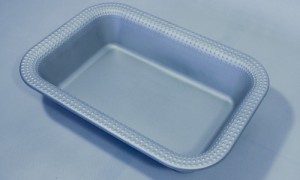Aluminum Prototype Machining: Fast, Accurate Solutions for Product Innovation
In the competitive world of product development, aluminum prototype machining has become a valuable tool for manufacturers and designers. This process provides accurate, durable prototypes that help bring ideas to life with speed and precision.
What is Aluminum Prototype Machining?
Aluminum prototype machining involves using advanced CNC (Computer Numerical Control) machinery to create precise, high-quality prototypes from aluminum. With aluminum's lightweight properties and strength, it’s a perfect choice for producing prototypes that closely resemble the final product. This method allows manufacturers to test designs, make adjustments, and improve products before mass production begins.
Why Choose Aluminum for Prototyping?
Aluminum is a preferred material in the prototyping industry for various reasons:
· Lightweight and Strong: Aluminum is significantly lighter than other metals while maintaining excellent strength, making it easier to handle and durable for testing.
· Corrosion-Resistant: Aluminum is naturally corrosion-resistant, ensuring prototypes retain their quality during testing.
· Cost-Effective: Compared to other metals, aluminum is affordable, making it an economical choice for multiple prototype iterations.
· Ease of Machining: Aluminum is relatively easy to machine, which speeds up the prototyping process without compromising accuracy.
The Steps in Aluminum Prototype Machining
Creating aluminum prototypes typically involves a few critical steps:
Designing the Model
The process starts with a digital 3D model created using CAD (Computer-Aided Design) software, which serves as a blueprint for machining.
CNC Programming
After finalizing the design, CNC programming translates the model into precise machining instructions for the CNC equipment.
Machining the Prototype
The CNC machine cuts, drills, and shapes the aluminum according to the programmed design, creating a detailed prototype.
Quality Inspection
After machining, the prototype undergoes thorough inspection to ensure it meets the design specifications and quality standards.
Testing and Evaluation
Finally, the prototype is tested in real-world scenarios to evaluate its functionality, durability, and suitability for production.

Benefits of Aluminum Prototype Machining in Product Development
Aluminum prototype machining offers numerous benefits to product developers:
· Speedy Development Cycles
CNC machining with aluminum enables rapid prototype creation, allowing designers to iterate quickly.
· Enhanced Design Flexibility
The precision of aluminum machining supports complex and custom designs, providing flexibility in testing various design iterations.
· Cost Savings
Aluminum’s affordability and the efficiency of CNC machining reduce development costs, making it ideal for companies on a budget.
· Realistic Testing
With durable, high-quality prototypes, manufacturers can test products in realistic conditions, identifying potential issues before committing to large-scale production.
Applications of Aluminum Prototype Machining
Aluminum prototype machining is widely used across industries, including:
· Automotive: For lightweight yet robust components in new vehicle models.
· Aerospace: To test intricate parts with strict performance standards.
· Electronics: For reliable and precise casing and housing prototypes.
· Medical Devices: For highly detailed and accurate device components.
Conclusion
Aluminum prototype machining streamlines the product development process, delivering accurate and cost-effective prototypes that closely mimic final products. By leveraging aluminum’s unique properties, manufacturers can produce high-quality prototypes quickly, allowing for efficient testing and design refinement. Embracing aluminum in prototype machining not only reduces costs but also enhances the precision and quality of the final product, setting the stage for successful mass production.

